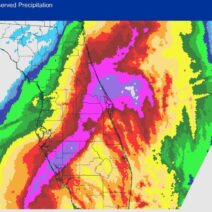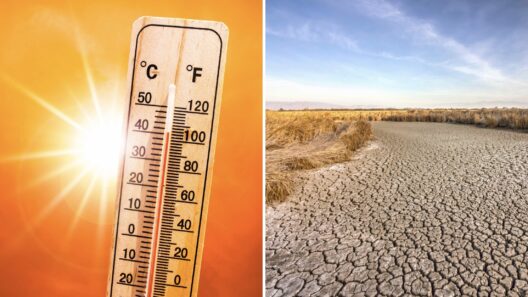Forests have long captivated humanity with their dense foliage, towering trees, and intricate ecosystems. These vast expanses of greenery are not merely picturesque landscapes but are fundamental to the planet’s climatic stability. The climate within forests is influenced by myriad factors and plays a crucial role in the larger climate system of the Earth. This exploration delves into the essence of forest climates, examining their components, interactions, and significance in the context of global climatic patterns.
To begin, it is essential to understand the intricate balance of microclimates present within forest habitats. A microclimate refers to the localized atmospheric conditions that can differ significantly from the surrounding areas. Forests, with their variable canopy heights and structural diversity, create a multitude of microclimates beneath the trees. The tall canopies provide shade, reducing sunlight penetration and creating cooler temperatures at ground level. This shading effect can lower the surface temperature by several degrees, creating a haven for moisture-laden air that fosters the growth of understory vegetation.
Temperature, humidity, and precipitation are the primary climatic factors that dictate life in forested areas. Within the confines of a forest, temperatures can fluctuate dramatically from day to night and across seasons. During daylight hours, the canopy intercepts sunlight, warming the air directly beneath it. However, as night falls, the absence of solar radiation leads to rapid cooling. Humidity is particularly high in forests because of the transpiration process, where trees release water vapor into the atmosphere. This moisture contributes to the overall humidity, leading to a lush and verdant environment that supports diverse flora and fauna.
Rainfall patterns also significantly affect forests, and they often exhibit a unique hydrological cycle. Forests are adept at capturing precipitation. Their canopies intercept rain, allowing it to trickle down slowly, which increases the absorption rate into the soil. This process minimizes surface runoff and soil erosion, helping maintain the health of the ecosystem. In turn, forests play a pivotal role in the water cycle, replenishing aquifers and ensuring that water persists even during dry spells. The interplay of such climatic factors demonstrates the forests’ ability to sustain life amidst varying environmental conditions.
The importance of forests extends beyond their immediate vicinity. They act as carbon sinks, sequestering vast amounts of carbon dioxide from the atmosphere. Trees absorb CO2 during photosynthesis, a crucial process where they convert sunlight into energy while releasing oxygen. This dynamic not only enriches the atmosphere with vital oxygen but also mitigates the impacts of climate change. Scientific studies reveal that tropical forests, in particular, absorb colossal amounts of greenhouse gases, thereby playing a critical role in the planetary climate system.
However, the relationship between climate and forests is complex and vulnerable. Climate change poses various threats to forest ecosystems worldwide. Increased temperatures, altered precipitation patterns, and more frequent and intense weather events can disrupt the delicate balance within these environments. For instance, prolonged droughts can stress trees, making them more susceptible to pests and diseases. Furthermore, higher temperatures can lead to increased rates of decomposition, releasing stored carbon back into the atmosphere and exacerbating climate change.
As the climate continues to shift, the resilience of forest ecosystems is being tested. The phenomenon of shifting biomes has been observed, wherein certain forest types are moving toward higher altitudes or latitudes in search of favorable climatic conditions. This migration is not without consequences. For instance, when forests relocate, they may encounter different soil types and moisture conditions that could impede their growth. Additionally, the animals and plants that depend on specific ecosystems may not be able to adapt quickly enough, leading to a loss of biodiversity.
Another aspect deserving attention is the role forests play in regulating local weather patterns. Forests can influence precipitation by enhancing the condensation of water vapor in the atmosphere. As trees release moisture through transpiration, it can lead to increased rainfall in surrounding areas, which is particularly vital for ecosystems dependent on predictable precipitation. This feedback loop illustrates the interconnectedness of climatic phenomena, wherein forests not only adapt to but also shape their environmental conditions.
Forests serve as natural laboratories for studying climate change and ecological dynamics. Experiments and observational studies in forest ecosystems have provided invaluable insights into how this complex system operates. From understanding the roles of individual tree species in carbon sequestration to analyzing the interactions between various organisms, forests are at the forefront of ecological research. This informs conservation strategies and policies aimed at preserving these critical habitats in the face of human-induced pressures.
Moreover, the cultural and psychological significance of forests cannot be overstated. They offer sanctuary and solace, serving as spaces for recreation and reflection. The act of walking through a forest, surrounded by towering trees and the sounds of wildlife, elicits a profound sense of tranquility. Such experiences deepen our appreciation for these ecosystems and enhance the urgency with which we must protect them. Climate change consequently shifts from a distant abstract concern to an immediate reality, affecting not just the environment but our way of life.
In conclusion, the climate in forests is a multifaceted tapestry interwoven with the threads of temperature, humidity, precipitation, and ecological interactions. Understanding these elements reveals the profound importance of forests in moderating global climate patterns. Their ability to act as carbon sinks and regulators of local weather illustrates the integral role they play in the Earth’s climate system. However, the threats posed by climate change necessitate immediate action and vigilant stewardship. Protecting and restoring forest ecosystems is not merely an environmental imperative; it is a fundamental necessity for the survival of humanity and the planet as a whole. The time to act is now, for every moment counts in the fight against climate change.








